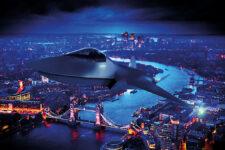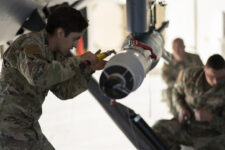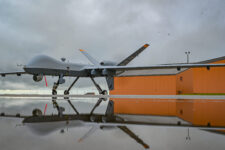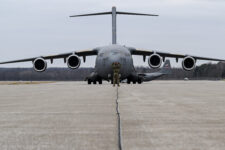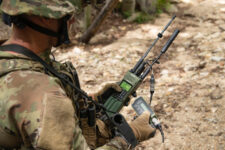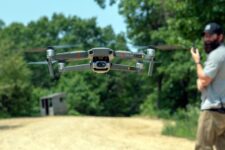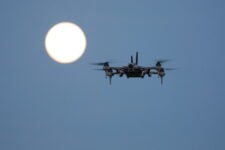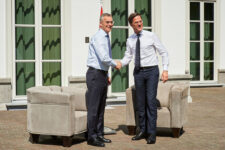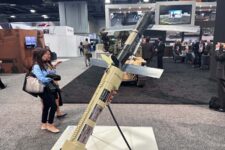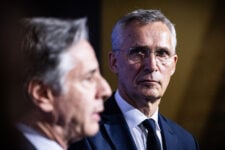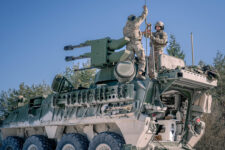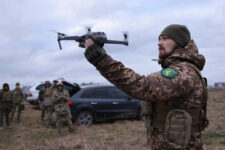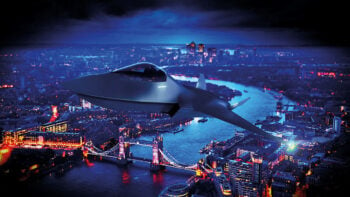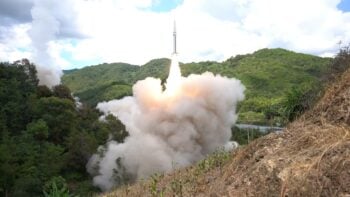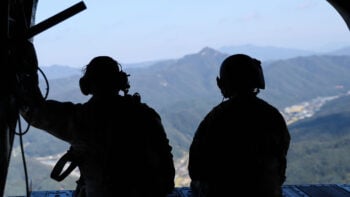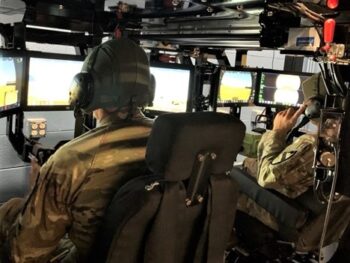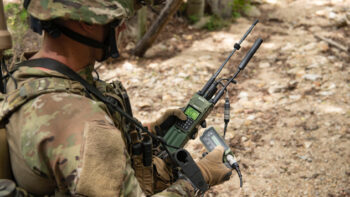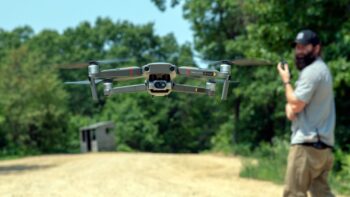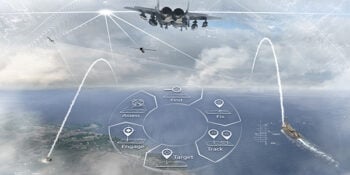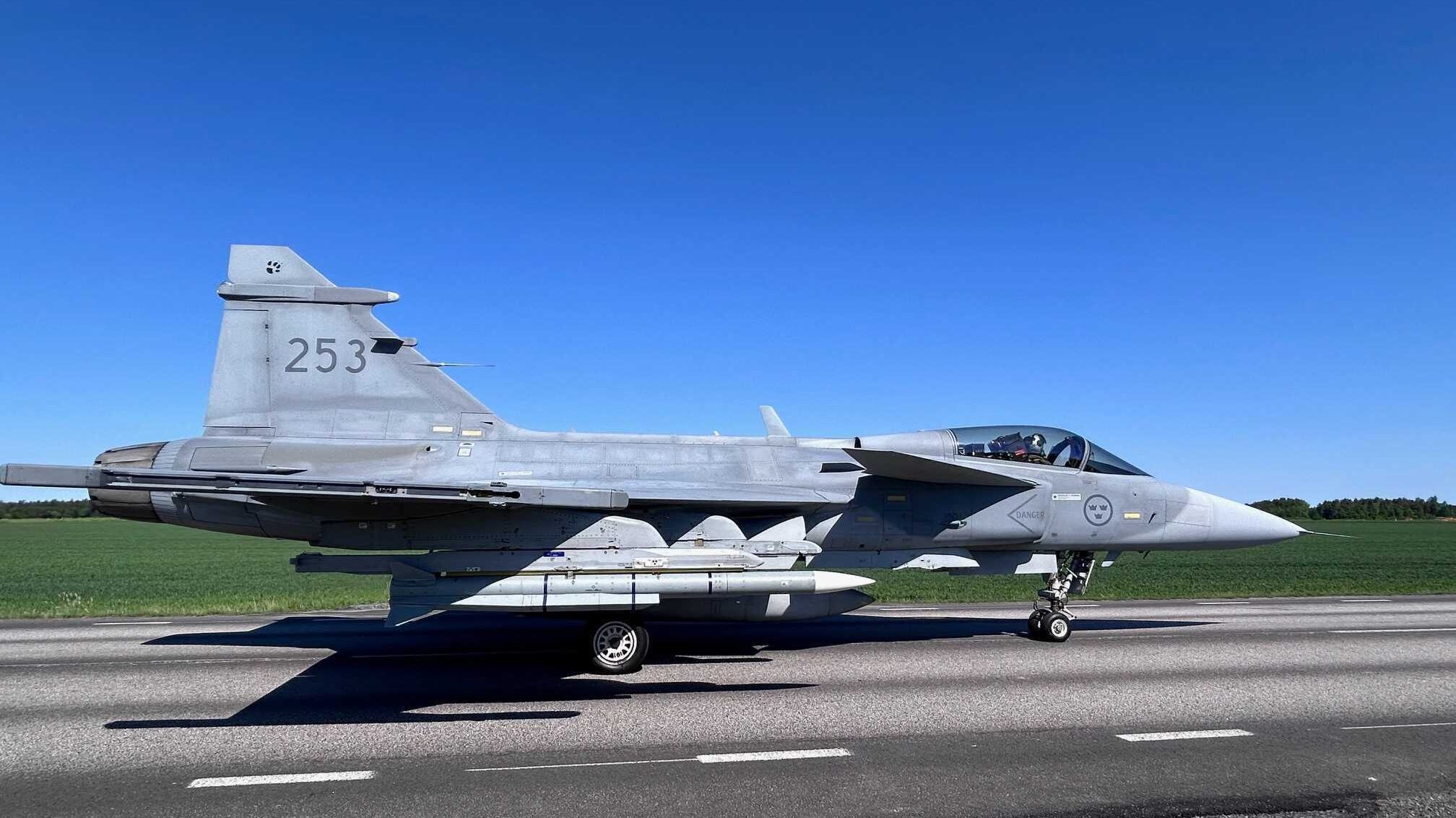
A Swedish Air Force Gripen C fighter jet prepares for take off from Route 44, southwest Sweden (Tim Martin / Breaking Defense)
SATENAS, Sweden — A top Swedish Air Force official is warning that he needs more weapons and base personnel in order to effectively make use of “dispersed operations,” the preferred way for the service to defend itself against any potential attack from Russia.
Tommy Petersson, Deputy Commander of the Swedish Air Force, told reporters at Skaraborg Air Force Wing (F7) on Tuesday that dispersed operations are “not as robust as I would want,” but “more base personnel [and] more basic weapons” would correct the situation.
One particular weapon could help, according to Adam Nelson, F7 Wing Commander. He said he expects progress to be made before the end of the year on acquiring a new long-range air-to-ground missile for Sweden’s Gripen C/D fleet, designed for dispersed operations.
The weapon “is not something that we have now, so I think it will be in the defense budget that will come out later this year in December,” he told Breaking Defense and other reporters, without identifying the munition. MBDA’s Storm Shadow stands out as a potential candidate to fulfil the new weapons requirement and has been recently used by Ukraine to destroy Russian targets. A spokesperson for MBDA said the company “has a long-standing history of partnership with both Sweden and Saab and is ready to meet the needs of any missile requirement expressed by the Swedish Armed Forces.”
Dispersed operations generally refers to the ability to spread military forces out geographically while still being able to conduct missions, ensuring any one enemy airstrike would do much less damage to, say, an air force fleet. For the Swedes and other European nations, that can include going as far as using regular roads for fighter jet runways.
“It’s almost impossible to hide anything for a long time since the satellites and drones will give the opponent good knowledge of what is happening,” said Nelson. “So the only thing you can do to survive is to be within the targeting cycle of the kill chain, of the opponent, and then move around.”
He said the air force is “looking into possibilities” to further develop dispersed operations to focus on more maneuvrable base units, logistics concepts and command and control capabilities. It is “an ongoing process, but the basic idea of moving around and dispersing and hiding in the woods, this is still there,” he added.
The Swedish Air Force, supported by a number of conscripts, ground crew, oil and weapon trucks demonstrated a series of Gripen C road strip take-off and landings to media near the F7 base. The base is home to three Gripen squadrons: two operational and one for conversion training of Swedish and international pilots. It also hosts 100 conscripts, currently in their “final two weeks” of service, said Nelson. (Breaking Defense accepted travel and accommodation from Gripen-maker Saab)
During the training exercise, using Route 44 roads, ground crew also loaded and unloaded Raytheon AIM-120 Advanced Medium Range Air-to-Air Missiles (AMRAAM) and Meteor Beyond Visual Range Air-to-Air Missiles (BVRAAM) on and off the Gripen aircraft. Pilots only fly with dummy or training munitions for road operations, but maintainers are required to practice reloading weapons and turning the aircraft, explained Nelson.
Disclosure of the plan to acquire new long range missiles comes a month after the Swedish Defence Commission advised Stockholm to approve a number of recommendations when it decides on the forthcoming defense bill, including additional procurement of air-to-air and cruise missiles.
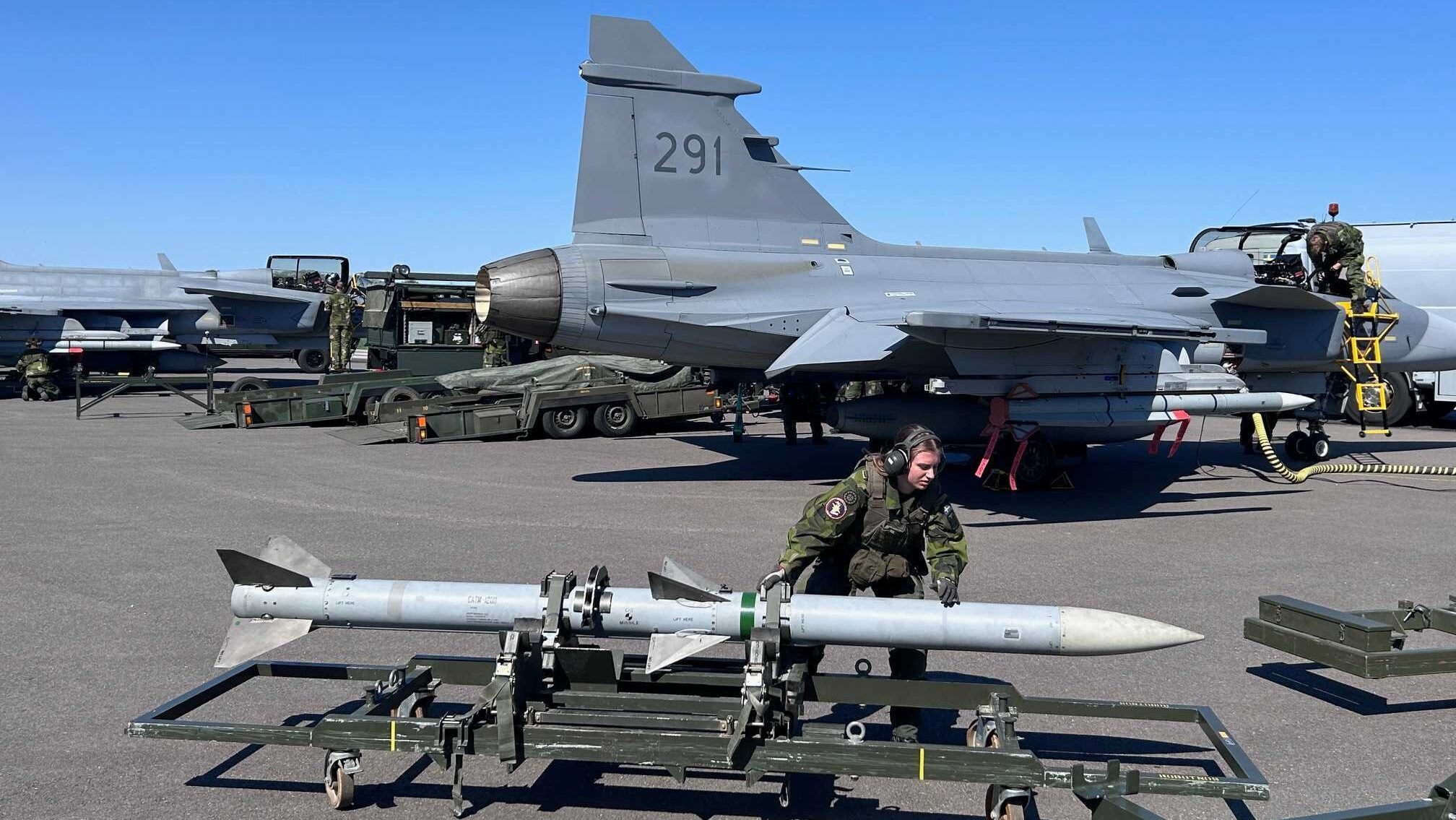
Swedish dispersed operations training requires air crew to load and unload Gripen weapons like Raytheon’s AIM-120 Advanced Medium Range Air-to-Air Missile (Tim Martin / Breaking Defense)
At a personnel level, it also proposed a conscription increase of 12,000 troops in 2032 — 4,000 more than current numbers.
“We have grown already since the last defence bill [in] 2020,” said Petersson. “We can all see some more resources coming” from the new bill.
If passed, the future legislation will also see Stockholm increase defense spending to 2.6 percent GDP by the end of the decade, based on proposed new funding of SEK 52.8 billion ($4.8 billion).
Sweden’s focus on dispersed operations remains consistent with efforts to increase readiness amid Russia’s war in Ukraine, with freedom of manoeuvre beyond reliance on fixed bases, key to undermining an enemy’s plan of attack.
Ukrainian and Russian airbases have been frequently targeted during the course of the war. Most recently a long-range Ukraine strike on Belbek airbase, in occupied Crimea, was said to have destroyed three Russian aircraft, according to Reuters.
Sweden has a long tradition of executing dispersed operations, but across Europe, others are keen to follow suit.
Italian Eurofighters, Polish Su-22s and MiG-29s fighter jets and a Turkish-made TB2 drone, all took part in road based flights as part of Poland’s week long exercise code-named “Route 604,” in March.
NGAD uncertainty won’t impact GCAP next-gen fighter effort in Europe, say analysts
“We are seeing estimates between $200-300 million per unit” for NGAD, said Douglas Barrie of IISS. “The US is the only country in the world that could afford to do that.”
